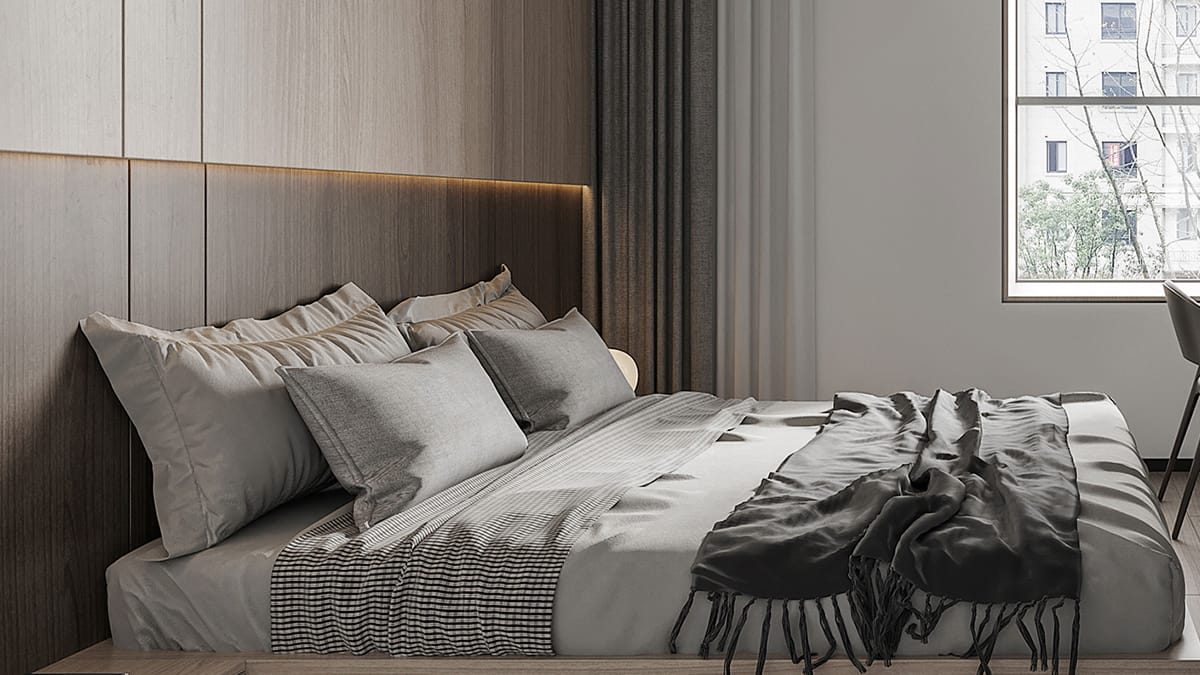
14 Sep Non Flammable Wall Panels Keep Your Home Safe
Table of Contents
You want to keep your family safe, right? Non flammable wall panels give you extra protection against fire. These panels help lower the chance of fire spreading in your home. You can feel more secure knowing your walls add a strong layer of defense.
Protect your loved ones
Reduce fire risks
Enjoy peace of mind every day
Key Takeaways
Non flammable wall panels help protect your home from fire. They give your family more time to get out safely if there is a fire.
Always look at the fire resistance rating and certifications of wall panels. This helps make sure your home is as safe as possible.
Using non flammable wall panels can make your insurance cost less. This helps you save money over time.
These panels are strong and do not need much care. This helps you save time and money on fixing them.
Pick the right non flammable wall panel for your home. Think about what your home needs and the fire risks in your area to stay safe.
Non Flammable Wall Panels and Fire Safety
Fire Resistance
You want your home to stand strong if a fire ever starts. Non flammable wall panels give you that extra layer of protection. These panels are made to resist high heat and flames. They do not catch fire easily, so they help keep your walls safe for longer.
Let’s look at how different wall panels stand up to fire:
Panel Type | |
|---|---|
Type X | At least 1 hour |
Type C | Stronger than Type X |
FRP | Tough and fire-resistant |
MGO Boards | Very fire-resistant |
When you use non flammable wall panels, you add valuable time for everyone in your house to get out safely. These panels go through tough tests, like ASTM E84, to see how fast flames and smoke spread. They often perform much better than regular wall materials. You can trust that these panels meet strict safety rules. This means you get more time and better protection if a fire ever happens.
Tip: Always check the fire resistance rating before you choose a wall panel. A higher rating means more time to escape and less damage to your home.
Preventing Fire Spread
Stopping a fire from spreading is just as important as stopping it from starting. Non flammable wall panels help slow down flames and smoke. This gives you and your family more time to leave the house safely.
Mineral wool insulation does not burn or make harmful smoke during a fire. You can use it in multi-story homes for extra safety.
It keeps fire from moving across outside walls and between floors.
In tough tests like ASTM E119, mineral wool stayed strong for five hours at over 2,000 ℉.
The NFPA 285 test does not require mineral wool because it does not burn. This shows how well it stops fire from spreading.
When you use non flammable wall panels, you make it harder for fire to move from room to room. This can save lives. You also get better air quality during a fire because these panels do not let off as much smoke. You and your family can see better and breathe easier while you get out.
Non flammable wall panels can give you peace of mind. You know you have done something important to protect your home and everyone inside.
Benefits of Non Flammable Wall Panels
 Safety
Safety
You want your home to be safe for everyone. Non flammable wall panels protect better than regular drywall. These panels slow down fire spread. You get more time to leave if a fire starts. Fire-resistant drywall keeps your family and your things safe. It is very important for every home.
Fire-resistant drywall holds back fire and slows it down.
It keeps the house strong so you can escape safely.
It is smart to use, especially in big homes.
Safety certifications help you know these panels are tested:
Certification | Requirements |
|---|---|
NFPA Class A | Flame spread index of 0-25, Smoke development max 450 |
ASTM | Must pass E-84 testing and be certified by ASTM or UL |
You can trust panels with these certifications. They follow strict safety rules and help keep your home safe.
Tip: Always look for NFPA Class A and ASTM certifications when picking non flammable wall panels.
Peace of Mind
You should feel calm and safe at home. Non flammable wall panels help you relax because they do not catch fire easily. Homeowners say these panels help them feel better, especially where wildfires happen. Hardie® siding and NovAScend panels do not burn when flames touch them. They do not make fires worse, so you can focus on other safety steps.
You feel safe knowing your walls will not make fires bigger.
You can enjoy real wood looks with NovAScend panels and stay safe.
You feel good knowing your home is protected.
Non flammable wall panels also help with noise. Acoustic panels make rooms quieter, lower stress, and help you sleep better. You get a peaceful, safe place to live and rest.
Note: Many homeowners say they worry less and sleep better after using these panels.
Insurance
Did you know your wall panels can change your insurance? Insurance companies check fire risk when setting your premium. Homes with non flammable wall panels often get lower rates because they are safer. Some companies give discounts for fire-resistant roofs, sprinkler systems, and wildfire safety steps.
Description | Potential Savings | |
|---|---|---|
Fire-Resistant Roof Discount | Class A fire-rated roofs | 10-20% premium reduction |
Sprinkler System Discount | Interior fire sprinkler system | Up to 15% lower rates |
Wildfire Mitigation Discount | State-approved wildfire prevention standards | Additional savings |
Multi-Layer Safety Discount | Fire-resistant materials + safety systems | Increased discount |
Insurance companies may charge more for risky cladding, but they reward safer materials. You save money and get better coverage with non flammable wall panels.
Durability
You want your walls to last many years. Non flammable wall panels last longer than regular walls. WPC wall panels last 20 to 30 years. Regular walls last only 10 to 15 years. These panels resist water, weather, and fading. You spend less time and money fixing them.
Wall Material | Average Lifespan (Years) |
|---|---|
WPC Wall Panels | 20 to 30 |
Traditional Materials | 10 to 15 |
Here are features that make these panels strong:
Feature | Benefit |
|---|---|
Dual-layered defense against moisture | Stops water damage and keeps walls strong longer. |
Engineered for various climates | Handles tough weather and stays strong. |
Resistance to environmental stressors | Keeps color and texture, so walls look nice for years. |
Low-maintenance nature | Needs little care, saving you time and money. |
Tip: Durable panels mean fewer repairs and a home that looks good for years.
Types of Non Flammable Wall Panels
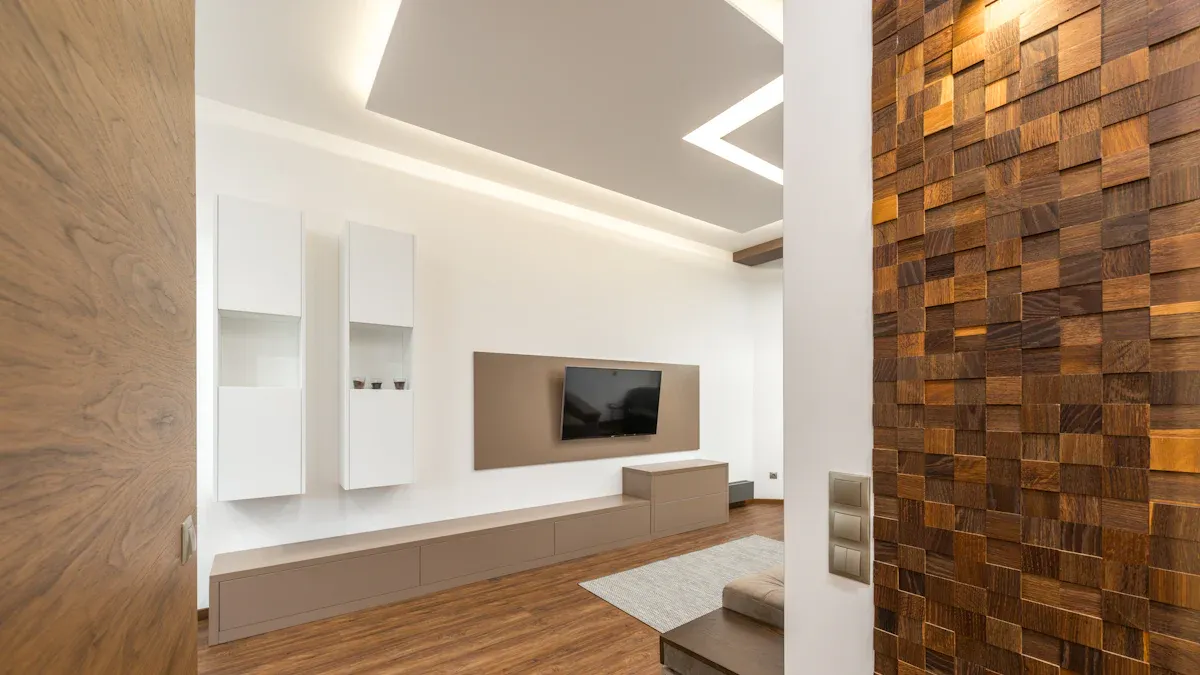 You can pick from many non flammable wall panels. Each type helps keep your home safer from fire in its own way.
You can pick from many non flammable wall panels. Each type helps keep your home safer from fire in its own way.
Magnesium Wall Board
Magnesium wall board is also called MgO board. It is very good at stopping fire. MgO panels can take heat up to 1200°C. They do not burn or make dangerous smoke. These panels protect your home for up to four hours. That is longer than most other panels.
Material Type | Fire Resistance Duration | Combustibility | Smoke/Toxic Fume Emission |
|---|---|---|---|
Magnesium oxide boards | 1 to 4 hours | Non-combustible | None |
Gypsum board | 0.5 to 2 hours | Combustible | Low |
Cement board | 1 to 2 hours | Non-combustible | None |
Plywood | 0 hours | Combustible | Yes |
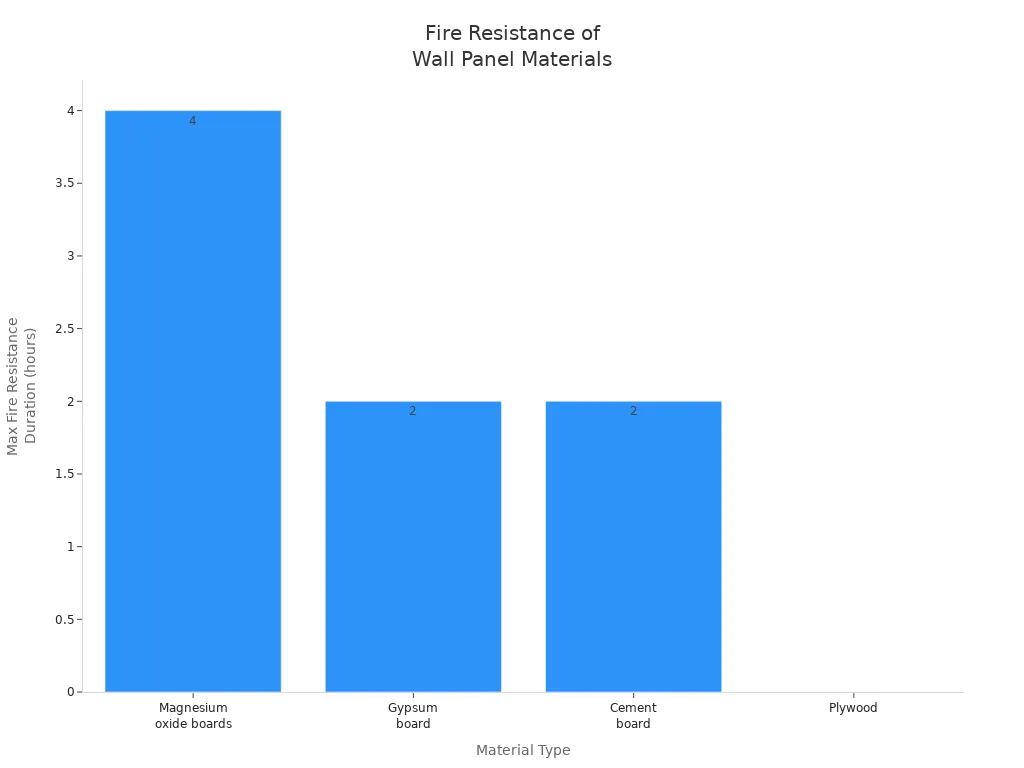
Gypsum
Gypsum panels are used a lot in homes. You see them in fire-resistant drywall and HardiPanel. Gypsum does not burn and helps slow down fire. Type X and Type C panels have glass fibers or special stuff for more safety. Some panels can protect for up to four hours.
Property | Description |
|---|---|
Core Type | Type X: glass fibers; Type C: extra additives for more fire resistance |
Thickness | Type X: 5/8”; Type C: 1/2” or 5/8” |
Fire Ratings | Up to 3 hours (ceilings), 4 hours (walls and columns) |
Flame/Smoke | Reduces flame spread and smoke better than standard gypsum board |
Gypsum panels are also good for air inside your house. They have low VOCs.
Cement Board
Cement board gives strong fire protection. You find it in things like calcium silicate board. Cement board does not burn or make smoke. It works well for up to two hours in fire tests. You can use it in kitchens, bathrooms, and other safe places.
Panel Type | Fire Resistance Level |
|---|---|
Calcium Silicate Board | |
Cement Board | Moderate, less effective for long exposure |
Mineral Wool Core
Mineral wool core panels use rocks like basalt. They have a Class A fire rating. These panels do not burn or make toxic gases. You can get panels that last one, two, or three hours in a fire. Mineral wool panels meet tough European safety rules. They work well for roofs and walls.
TotalClad MW panels protect for up to three hours.
Cladme™ mineral wool roof panels are safe and keep heat in.
Rock wool can take high heat and stays safe in a fire.
HPL Panels
HPL panels use special resins and flame stoppers. They have a thick surface that does not burn or drip in fire. Most HPL panels get a B-s1,d0 rating. This means they stop fire and smoke from spreading. These panels meet safety rules in America, Europe, and India.
Tip: You can also pick other non flammable wall panels. Some are fabric-covered Homasote, MAXTERRA, ThermalSafe, CENTRIA, Durra Panel, and luxury PVC panels. Some panels use fiberglass, mineral resins, or steel for more fire safety.
Choosing Panels and Installation
Assessing Needs
You need to pick the best wall panels for your house. First, think about what is most important to you. Here are some things to look at:
Fire ratings and certifications tell you how well panels stop fire.
Material strength helps you choose panels that last, like Type X or Type C gypsum.
Following building codes keeps your house safe and legal.
If you care about the planet, look for eco-friendly panels.
Look at your home’s layout and see where risks are higher. Kitchens, garages, and basements often need stronger panels. If you live where wildfires happen, you may want panels with higher fire ratings.
Comparing Materials
Not every panel is the same. You should check fire resistance, how long they last, and price before picking. Here is a quick chart:
Material Type | Fire Resistance | Durability | Cost (N/A) |
|---|---|---|---|
Composite Wall Panels | High | Excellent | N/A |
Integrated Systems | Very High | Superior | N/A |
Traditional Materials | Moderate | Good | N/A |
Composite panels and integrated systems give the best fire safety and last longer. Traditional materials might cost less but do not protect as well.
Installation
You can put up non flammable wall panels yourself or hire someone. Here is what you usually do:
Look for cracks in your walls and fix them.
Measure and mark where each panel will go.
Cut panels with a knife or saw and check the size.
Start in one corner and attach panels straight.
Use screws or special glue to hold panels in place.
Experts know how to follow safety rules and make the walls look nice. Doing it yourself works for small jobs, like one wall. For big or tricky jobs, you should call a pro.
Tip: Pros make sure your panels are safe and look good.
Maintenance
Take care of your panels so they last:
Check panels every year or after something big happens.
Clean them with soft cloths and gentle cleaners.
Fix damage right away and call a pro if you need help.
Keep notes about checks and repairs.
Checking your panels every year helps keep your house safe from fire.
Cost and Value
 Investment
Investment
You might wonder how much it costs to make your home safer with non flammable wall panels. The price depends on the size of your room and the type of panel you pick. For a standard 12×12 foot room, you can expect to pay between $3,000 and $4,500 for installation. On average, the cost per square foot is about $20, but it can range from $1 to $40 depending on the material.
Description | Cost Range |
|---|---|
Average cost for wall paneling installation (12×12 ft room) | |
Average cost per square foot | $20 |
Cost range per square foot | $1 – $40 |
You pay more upfront for these panels than for regular drywall. But you get more than just a wall. You get safety, peace of mind, and a home that meets strict fire codes. Many panels use eco-friendly materials, so you help the planet, too.
Long-Term Savings
You save money over time when you invest in fire safety. Insurance companies see your home as less risky when you use strong fire protection. This can lower your insurance premiums. Here’s how you benefit:
Insurance companies often give you lower rates for having advanced fire protection.
Over the years, the money you save on insurance can help cover the cost of your panels.
You avoid big repair bills after a fire.
You protect your property and keep your family safe.
You spend less on maintenance because these panels last longer.
Many homeowners in fire-prone areas see big drops in their insurance costs after installing fire-resistant panels. You also meet safety rules, like NFPA codes, which keeps your home legal and secure.
Are non flammable wall panels worth it? Yes. You get safety, savings, and a home that stands strong for years.
You want your home to be safe and strong. Non flammable wall panels, like magnesium wall board, help limit fire growth and keep your family protected. Experts say using fire-resistant materials gives you better performance and long-term peace of mind. If you want extra safety, start by researching different panels and talk to a professional. You can feel confident knowing you made a smart choice for your home.
FAQ
What makes a wall panel non flammable?
Non flammable wall panels use special materials like magnesium oxide, gypsum, or mineral wool. These materials do not catch fire or spread flames. You get extra time to escape if a fire starts.
Can I install non flammable wall panels myself?
You can install some panels on your own if you have basic tools. For big rooms or tricky spaces, you should call a pro. They make sure your panels fit right and meet safety codes.
Do non flammable wall panels look good in my home?
Yes! You can find panels in many colors and styles. Some even look like wood or stone. You can match your home’s design and still stay safe.
How do I clean and care for these panels?
Just wipe panels with a soft cloth and mild cleaner. Check for damage once a year. Fix any cracks or chips right away. This keeps your panels strong and fire-resistant.

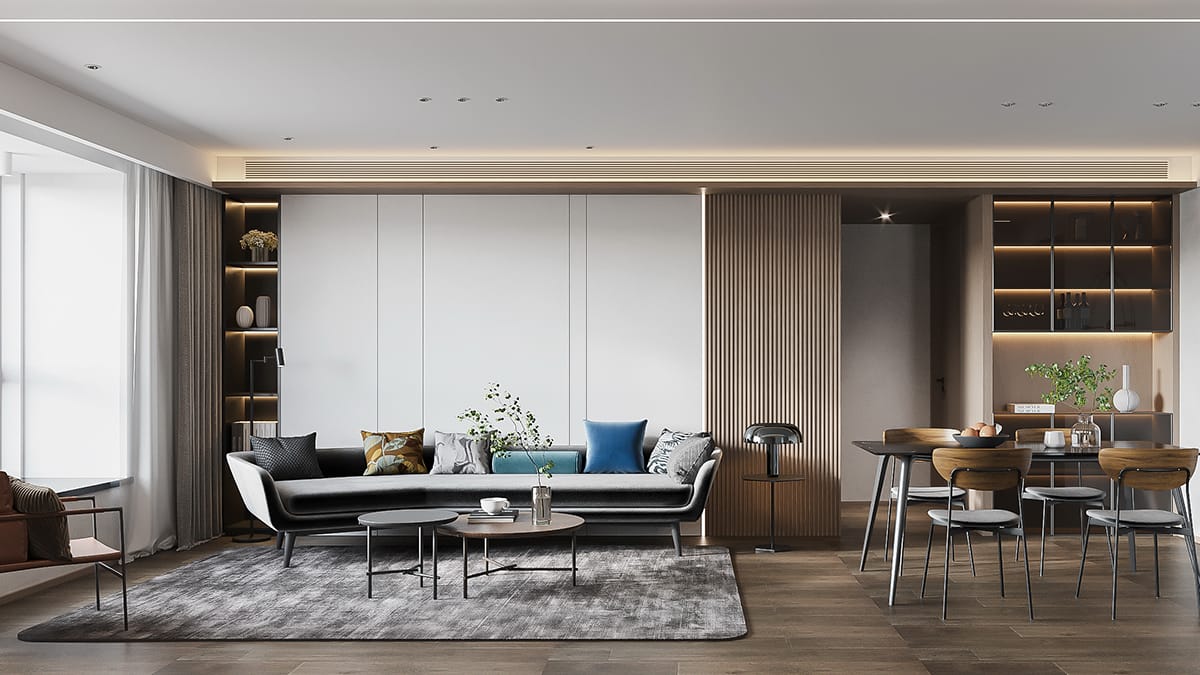 Safety
Safety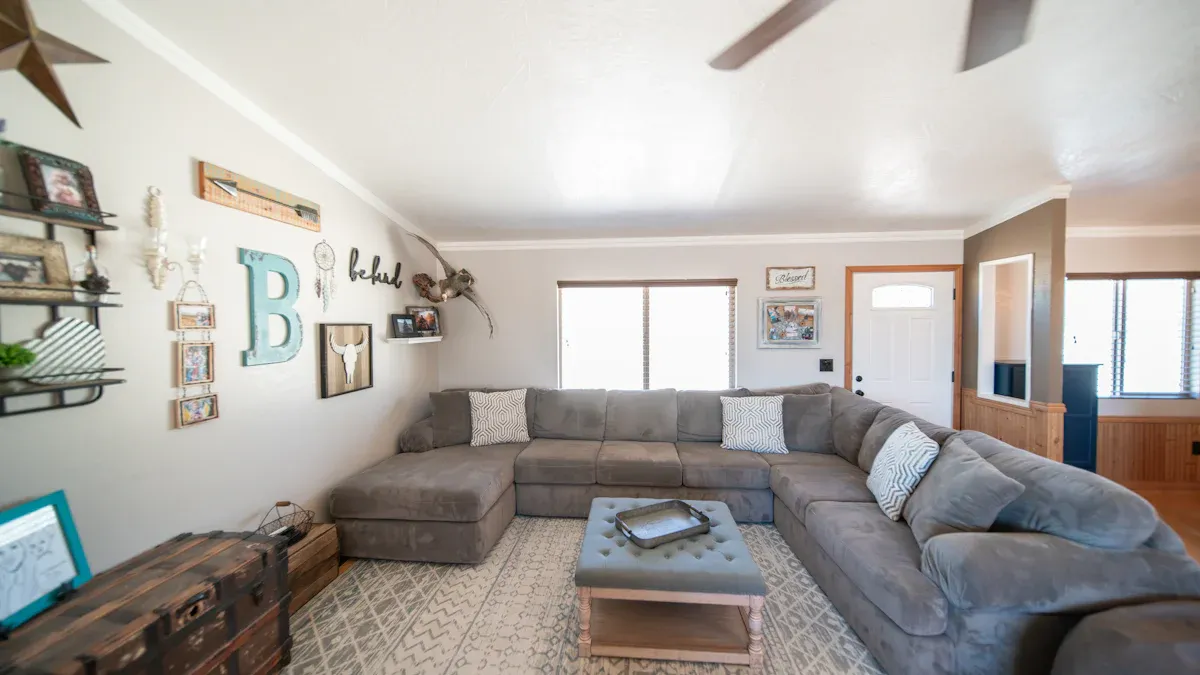 Investment
Investment